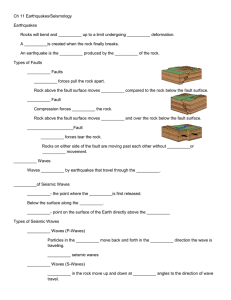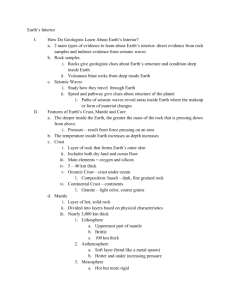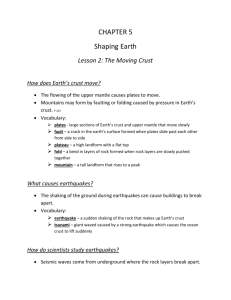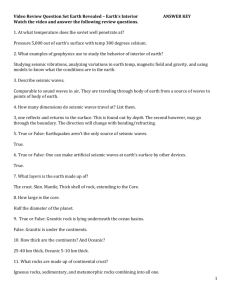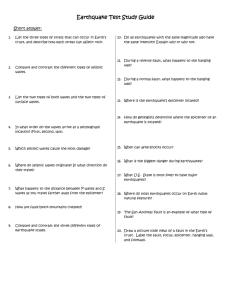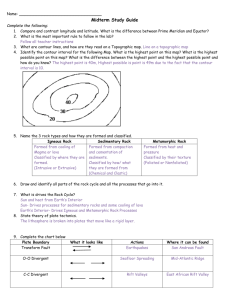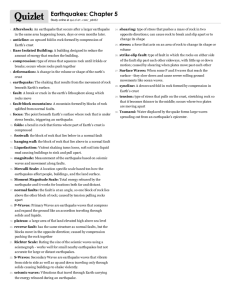Earthquakes Vocabulary - Madison County Schools
advertisement
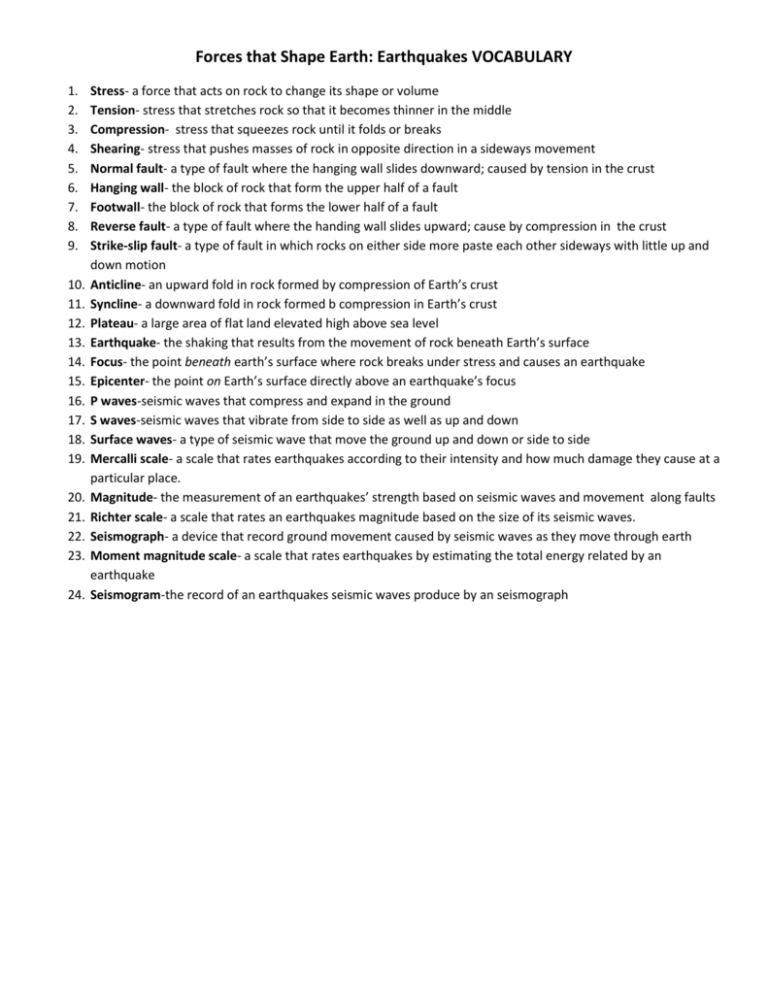
Forces that Shape Earth: Earthquakes VOCABULARY 1. 2. 3. 4. 5. 6. 7. 8. 9. 10. 11. 12. 13. 14. 15. 16. 17. 18. 19. 20. 21. 22. 23. 24. Stress- a force that acts on rock to change its shape or volume Tension- stress that stretches rock so that it becomes thinner in the middle Compression- stress that squeezes rock until it folds or breaks Shearing- stress that pushes masses of rock in opposite direction in a sideways movement Normal fault- a type of fault where the hanging wall slides downward; caused by tension in the crust Hanging wall- the block of rock that form the upper half of a fault Footwall- the block of rock that forms the lower half of a fault Reverse fault- a type of fault where the handing wall slides upward; cause by compression in the crust Strike-slip fault- a type of fault in which rocks on either side more paste each other sideways with little up and down motion Anticline- an upward fold in rock formed by compression of Earth’s crust Syncline- a downward fold in rock formed b compression in Earth’s crust Plateau- a large area of flat land elevated high above sea level Earthquake- the shaking that results from the movement of rock beneath Earth’s surface Focus- the point beneath earth’s surface where rock breaks under stress and causes an earthquake Epicenter- the point on Earth’s surface directly above an earthquake’s focus P waves-seismic waves that compress and expand in the ground S waves-seismic waves that vibrate from side to side as well as up and down Surface waves- a type of seismic wave that move the ground up and down or side to side Mercalli scale- a scale that rates earthquakes according to their intensity and how much damage they cause at a particular place. Magnitude- the measurement of an earthquakes’ strength based on seismic waves and movement along faults Richter scale- a scale that rates an earthquakes magnitude based on the size of its seismic waves. Seismograph- a device that record ground movement caused by seismic waves as they move through earth Moment magnitude scale- a scale that rates earthquakes by estimating the total energy related by an earthquake Seismogram-the record of an earthquakes seismic waves produce by an seismograph


